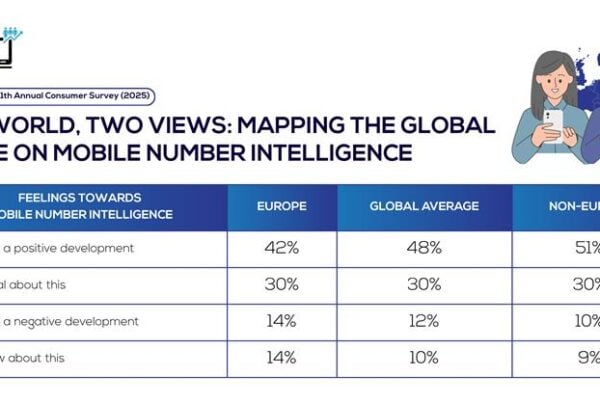MEF’s Riccardo Amati examines Nvidia’s AI boom amid geopolitical tensions, China market uncertainty, and cloud slowdowns.
Chip giant’s global AI strategy faces geopolitical hurdles, China market uncertainties and cloud slowdowns. With major implications for the mobile ecosystem.
Nvidia’s recent financial performance underscores its leadership in AI infrastructure, yet geopolitical tensions, particularly with China, present significant challenges that could impact its growth trajectory.
Nvidia’s dominance in AI infrastructure is indisputable, but its reliance on global markets—at a time when some countries are rejecting globalization, embracing political sovereignty, and adopting trade protectionism in pursuit of a new world order—introduces complexities that could affect future growth. Nvidia’s strategic decisions will be pivotal in navigating these challenges, with significant implications for the mobile ecosystem.
Market Misreads Nvidia’s AI Boom
Wedbush Securities senior analyst Dan Ives noted that the market overreacted to Nvidia’s recent earnings report, stressing that the AI boom is far from over. “I think the boom is just getting started,” he told Bloomberg, suggesting that the post-earnings dip in Nvidia’s stock doesn’t reflect the company’s actual performance. Ives pointed out that Nvidia continues to grow even without sales in China, and its next-generation Blackwell chip sales jumped 17% sequentially, indicating robust demand in other regions.
Nvidia’s recent financial performance underscores its leadership in AI infrastructure, yet geopolitical tensions, particularly with China, present significant challenges that could impact its growth trajectory.“
The Santa Clara, California based tech giant is developing a new AI chip tailored for the Chinese market to comply with U.S. export restrictions. This chip, based on Nvidia’s latest Blackwell architecture, is expected to offer performance superior to the H20 model, which is currently the most advanced chip Nvidia is allowed to sell in the People’s Republic.
Nvidia’s Q2 2025 revenue reached $46.7 billion, up 56% year-over-year. The company projects $54 billion for Q3, slightly above Wall Street estimates, but this forecast notably excludes potential sales to China due to ongoing U.S.-China trade tensions. The omission underscores the significant uncertainty the company faces in one of its largest international markets.
Nvidia’s data center segment, a major revenue driver fueled by AI workloads, showed slower-than-expected growth. While demand from cloud providers remains strong, the pace of expansion eased compared with prior quarters, likely due to a combination of inventory adjustments, cautious corporate spending, and timing of large AI infrastructure deployments. This softer growth suggests that while AI adoption is still robust, investors may need to temper expectations for near-term acceleration in data center sales, particularly as geopolitical and market uncertainties persist.
Huang’s Vision for AI Growth
Nvidia CEO Jensen Huang remains optimistic about the future of AI, projecting a multi-trillion-dollar opportunity over the next five years. He described the current phase as the start of a new industrial revolution, predicting $3 to $4 trillion in AI infrastructure spending by 2030, driven largely by major tech firms and data center operators.
Huang highlighted strong ongoing demand for both Nvidia’s high-end Blackwell and earlier-generation Hopper chips. He cited a $650 million purchase of its H20 chip by a non-Chinese customer as evidence of robust sales. Huang also noted that Nvidia could capture $35 billion from a $60 billion data center build-out.
Analysts like Ives support Huang’s outlook, viewing Nvidia’s performance as proof that the AI boom still has significant momentum. They maintain bullish sentiments on Nvidia, recognizing its pivotal position in the AI-driven tech ecosystem and viewing short-term stock volatility as a potential buying opportunity in the stock market.
Implications for the Mobile Ecosystem
The evolution of AI capabilities in mobile devices is closely tied to the availability and integration of advanced chips like Nvidia’s. As AI-infused services become more prevalent in mobile applications, the demand for high-performance chips will increase.
Geopolitical tensions—particularly the U.S.-China standoff over technology, trade, and broader political issues—could disrupt the supply of these chips, potentially affecting the development and deployment of AI features in mobile devices.
Supply chain disruptions due to trade restrictions could lead to delays in the availability of AI chips, impacting manufacturers’ ability to meet market demand. This could result in slower adoption of AI technologies in mobile devices, affecting both developers and end-users.
Furthermore, as countries like China invest in developing their own AI chip capabilities, Nvidia may face increased competition in the mobile ecosystem. Domestic alternatives could offer comparable performance at competitive prices, challenging Nvidia’s market share.
While Nvidia’s leadership in AI infrastructure positions it well for future growth, the company must navigate geopolitical challenges to maintain its dominance in the mobile ecosystem. Strategic adaptations and proactive measures will be essential to mitigate risks and capitalize on emerging opportunities in the tech industry.






